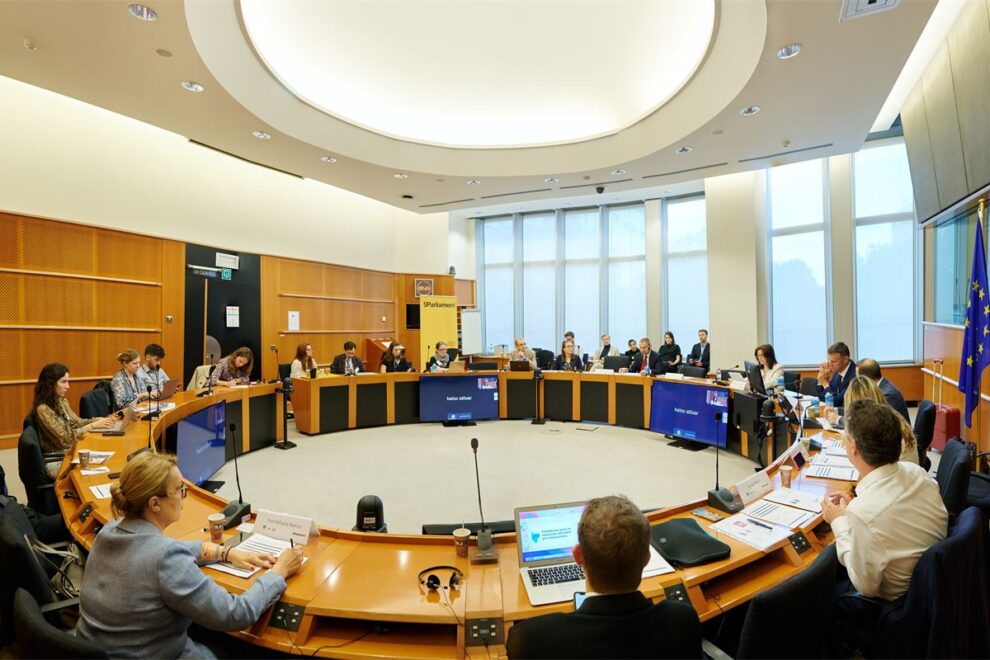Tobacco consumption continues to be the leading cause of preventable cancer in Europe, with 27% of all cancers attributed to smoking so The Parliament teamed up with three think tanks to look at Europe’s beating cancer agenda.
The European Commission’s Beating Cancer Action Plan is aimed at reducing the number of deaths from cancer in the EU. The action plan addresses the entire disease pathway, from prevention, early detection, treatment, to enhancing the quality of life of patients. Tobacco consumption continues to be the leading cause of preventable cancer in Europe, with 27% of all cancers attributed to smoking.
The Parliament alongside three think-tanks: the Istituto Bruno Leoni of Italy, European Expression of Greece, and Academy for Politics in Health of Croatia, organised a discussion in the European Parliament with MEPs that looked at the latest research into harm reduction and alternatives to smoking.
An evidence-based approach
Aldo Patriciello MEP (EPP, Italy) said that governments at an EU and national level should take into account the results of consolidated scientific studies to inform the policy response. Both Patriciello and Tomislav Sokol MEP (EPP, Croatia) said that all alternatives to smoking needed to be measured against the indisputable harmful effects of smoking.
“By embracing harm reduction products, we can give smokers a path away from cigarettes. Alternatives offer a less harmful way for smokers to satisfy their nicotine cravings without exposing themselves to the toxic cocktail of combustible tobacco,” said Radka Maxová MEP (S&D, Czechia).
Valter Flego MEP (Renew, Croatia) said that if the pandemic had taught us anything, it was the importance of taking an evidence-based approach to determine policy choices.
The MEPs present saw the clear benefits of harm-prevention strategies, but were concerned that younger people could be attracted to vaping, in particular, when sweet flavours were added. There was general agreement among the MEPs and scientists that regulation was still needed to prevent alternatives acting as a gateway to a younger generation.
Prevention
Dr Johann Rossi Mason, MOHRE (Mediterranean Observatory on Harm Reduction, Italy), underlined the importance of prevention and how measures from the use of car seat belts to the roll out of anti-HPV vaccines, have been successful. Rossi Mason highlighted the importance of taking a non-ideological approach based on solutions that had a real impact on reduction and which improved mortality.
Dr Pero Hrabač, School of Medicine in Zagreb, pointed to a report on ‘Nicotine without smoke: Tobacco harm reduction’ by the Royal College of Physicians. The report found that the hazard to health arising from long-term vapour inhalation from e-cigarettes, based on the evidence available today, is unlikely to exceed 5% of the harm from smoking tobacco.
Both scientists and think-tanks were concerned by a widely held misconception that nicotine causes cancer. While nicotine is highly addictive and is the reason most people continue to smoke, it is in itself relatively harmless. Almost all of the harm from smoking comes from the other chemicals in tobacco smoke. Head of Lifestyle Economics, at the Institute of Economic Affairs, Christopher Snowdon, which publishes a Nanny State Index on government regulation of smoking, alcohol, and food and soft drinks, shared his concern that this was not widely understood and that the public needed to be provided with more unambiguous information to make better choices.
Hrabač also pointed to a recently updated Cochrane review of e-cigarettes. The Cochrane approach is considered to be the ‘gold standard’ and is a meta-analysis of available quality research; in this instance, 78 studies with more than 22,000 participants. The review concluded with “high certainty” that people are more likely to stop smoking for at least six months using nicotine e-cigarettes, or ‘vapes’, than using nicotine replacement therapies, such as patches and chewing gum. Evidence also suggested that nicotine e-cigarettes led to higher quit rates than e-cigarettes without nicotine.
Romanian Professor of Dentistry Mihaela Răescu (Tobacco Harm Reduction Scholarship Programme) spoke about the transformation that alternatives delivered in terms of dental hygiene greatly reducing bacterial plaques that forms on teeth. Dentists also recommend that patients use alternatives to cigarettes if they a tooth implant, as it aids with bone resorption.
Heino Stöver, professor of Social Scientific Addiction Research at the Frankfurt University outlined the current situation in Germany where few actions have been taken to address the relatively high level of smoking. More than 60% of German smokers consider e-cigarettes to be equally as bad or worse for health than cigarettes.
Stöver’s work looked at the situation in Germany, which has a very high smoking prevalence at just over 35% of the adult population. Cigarettes are available from vending machines and there is some reluctance to introduce workplace restrictions on smoking. Stöver was sceptical that Germany would be able to reach its goal of reducing this figure to 5% by 2040 without more action. He emphasised that alternatives had to be part of the solution, given that complete cessation is very difficult for most people. The vast majority of smokers want to stop but the success rate in quitting was low. Since smoking is more prevalent among those in lower income groups barriers such as cost, or imposing additional taxation, are to be avoided.
Carlo Stagnaro from the Istituto Bruno Leoni pointed to the success of Sweden which has achieved remarkable success in reaching the 5% target for smoking without imposing strict restrictions on smokers. This was partly achieved through the wide availability of alternatives, especially snus. Snowdon also pointed to the UK, where the national public health body had recognised that alternatives should be encouraged to help people quit.
While potential long-term consequences of alternatives cannot be known in full, the current evidence is now extensive and shows the clear benefits of adopting policies that help smokers reduce exposure to carcinogens. Dr Fernandez Bueno, President of the Platform for Tobacco Harm Reduction said that the World Health Organisation needs to review its approach urgently in the light of the evidence and called for this to be done at its Conference of the Parties (COP10) at the Framework Convention on Tobacco Control meeting in November this year, saying that an approach that doesn’t include harm reduction through alternatives was no longer morally or ethically acceptable.
Finally, Themistoklis Kossidas of European Expression based in Greece looked at the positive benefits of a change in approach which apart from bringing health dividends, would also make a huge difference to the economy. Stöver estimates that in Germany alone the cost of continued smoking costs the Germany economy €100 billion on an annual basis.
Source: The Parliament Magazine



































